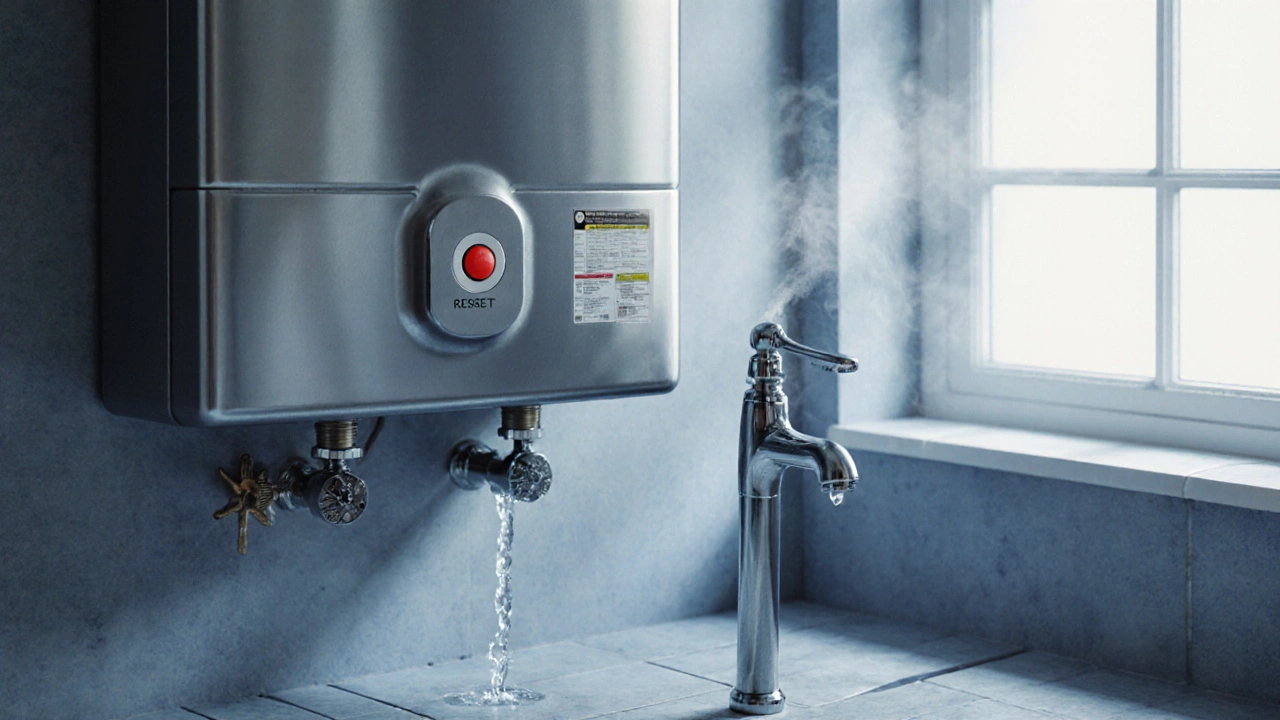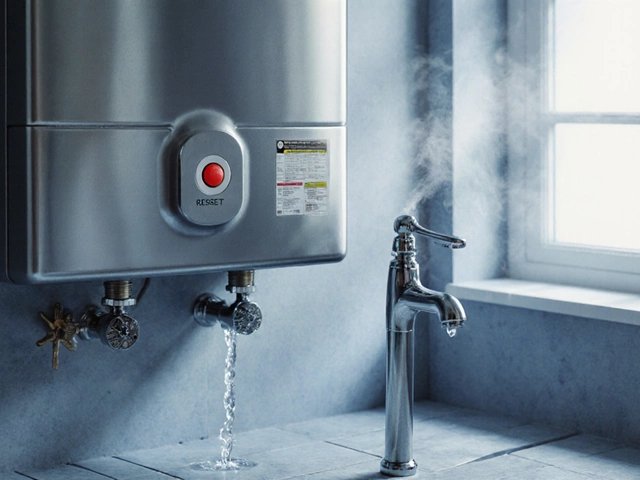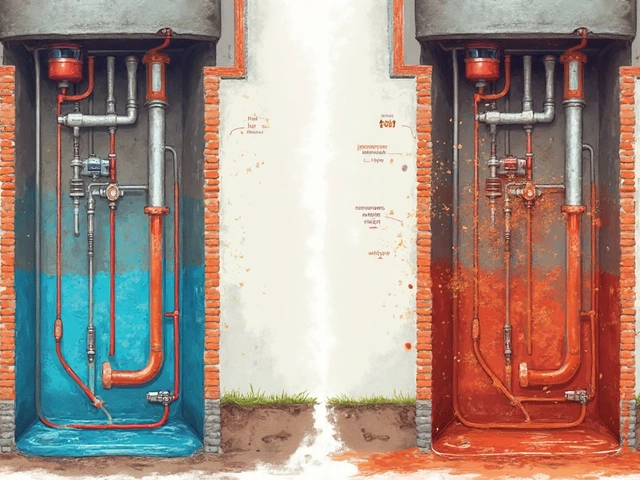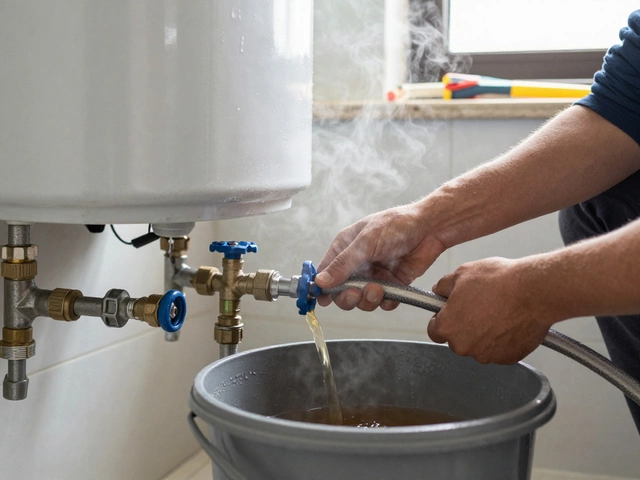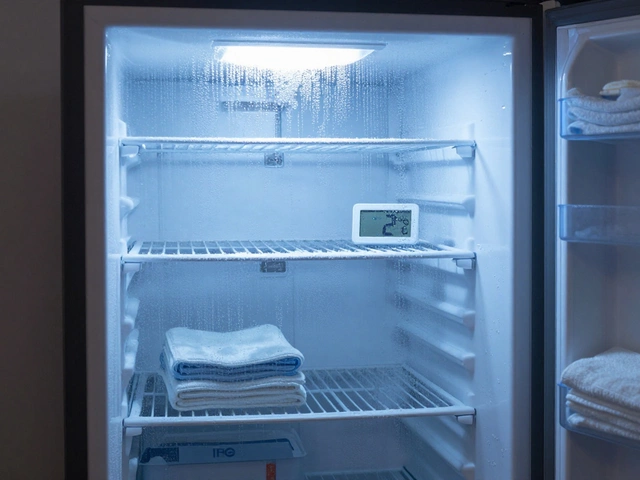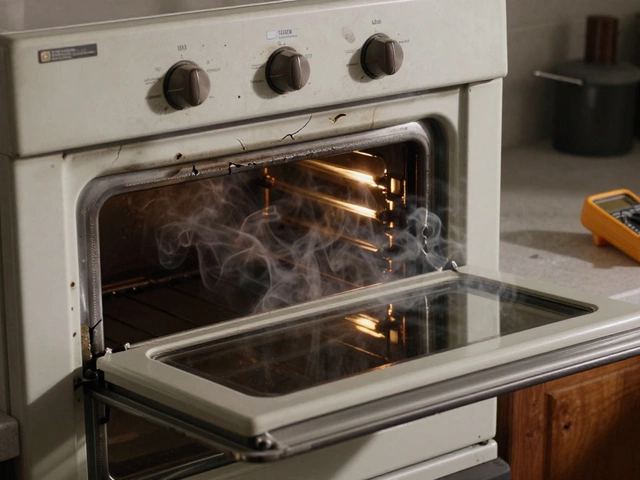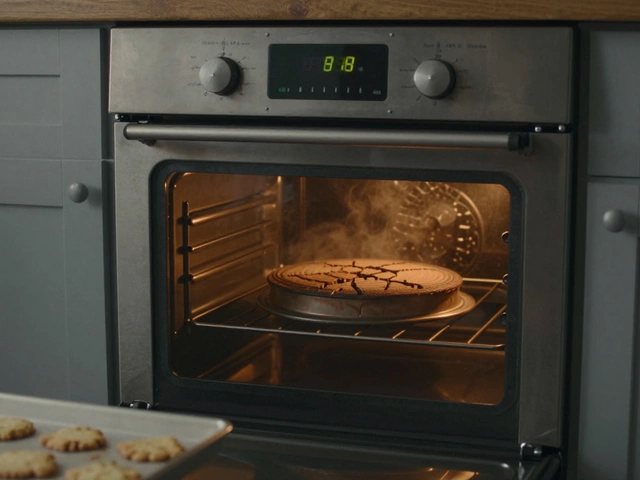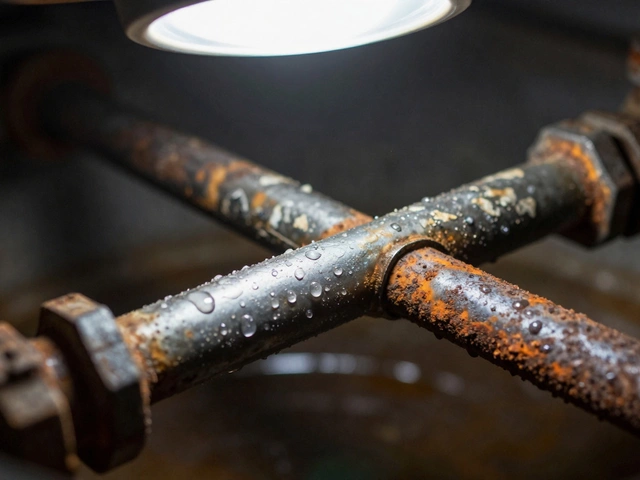When your Water Heater is a household appliance that heats water for showers, dishes, and heating systems stops delivering hot water, the first question is: does it just need a reset? Knowing the signs, the safety steps, and the limits of a reset can save you a costly service call.
What a Reset Actually Does
Most modern electric and gas water heaters have a reset button a safety feature that trips when the unit overheats. The button is linked to a high‑limit switch a thermostat that cuts power if the water temperature exceeds a safe threshold. Pressing reset simply tells the heater, “Okay, I’ve checked the situation, you can try heating again.” It does not fix broken parts, but it does clear a temporary over‑heat condition.
Common Signs Your Heater May Need a Reset
- No hot water at all - the tank stays lukewarm despite the thermostat being set high.
- Intermittent hot water - you get a burst of heat, then the water turns cold again.
- A popping or clicking sound from the unit - the high‑limit switch is tripping.
- Visible error code on the digital display (for models that have one).
- The circuit breaker a protective switch in your home’s electrical panel trips as soon as the heater tries to draw power.
If you notice any of these symptoms, a reset is worth trying before calling a professional.
Step‑by‑Step: How to Safely Reset Your Water Heater
- Turn off the power. For electric heaters, switch off the dedicated circuit breaker at the main panel. For gas units, set the gas valve to “off” and wait a few minutes for the pilot flame to extinguish.
- Locate the reset button. It’s usually a red or black button on the upper thermostat cover for electric models, or near the gas control valve for gas models.
- Press and hold the button for about 5 seconds. You should hear a click as the high‑limit switch releases.
- Restore power. Flip the circuit breaker back on or turn the gas valve to “on.”
- Give the heater 15‑20 minutes to fire up. Check the hot water temperature at a faucet.
If you get hot water after these steps, the issue was likely a temporary over‑heat and the reset solved it. If not, move on to the next diagnostic steps.
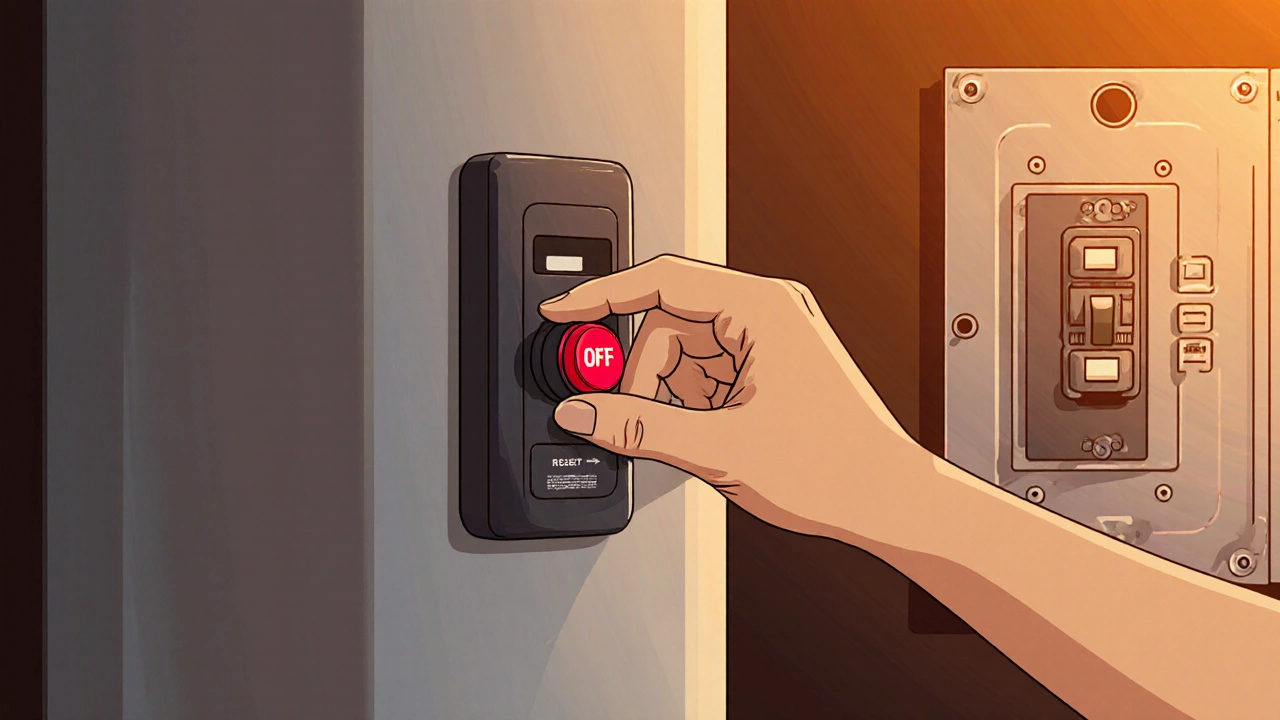
When a Reset Isn’t Enough - Deeper Issues to Investigate
A reset will not repair a faulty thermostat the device that tells the heater when to start and stop heating, a burned‑out heating element the electrical coil that actually heats the water in electric units, or severe sediment buildup mineral deposits that insulate the tank and cause overheating. Below are the most common follow‑up problems:
| Symptom | Likely Cause | Reset Helps? |
|---|---|---|
| No hot water | Tripped high‑limit switch, broken element | Often, but element may need replacement |
| Clicking noise, then cold water | Overheating from sediment | Reset may give temporary relief; flushing required |
| Error code "EL" or "E1" | Sensor failure, low water pressure | Reset clears code; sensor still faulty? |
| Circuit breaker trips instantly | Shorted heating element, wiring issue | Reset will not stop tripping; electrician needed |
If the reset doesn’t restore normal operation, you’ll need to inspect the thermostat, heating element, or call a licensed plumber/electrician.
Quick Diagnostic Checklist
- Power off the unit before any inspection.
- Check the pressure relief valve a safety valve that releases excess pressure for leaks.
- Look for a visible reset button; note its color and location.
- Listen for clicking or popping sounds when the heater tries to fire.
- Measure water temperature at a faucet after a reset - should be at least 120°F (49°C).
- If hot water is still inadequate, consider flushing the tank to remove sediment.
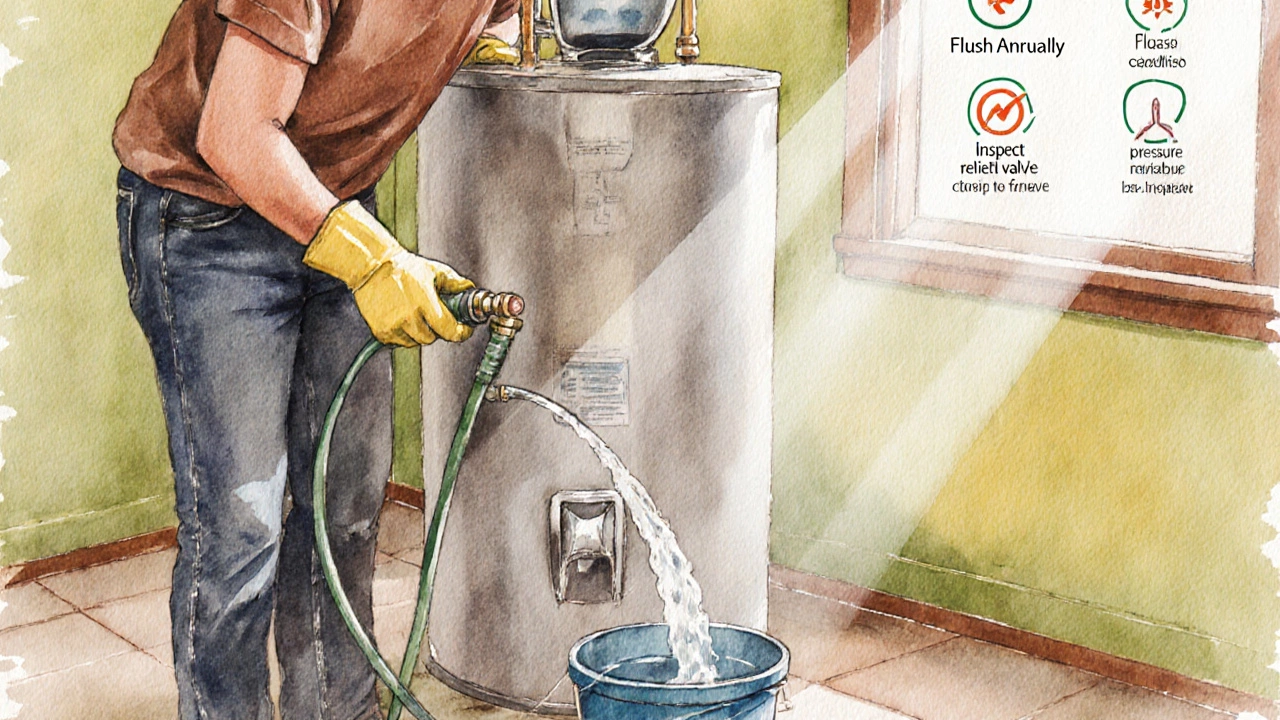
Preventive Maintenance - Keep Resetting to a Minimum
Regular care reduces the chance of overheating and the need for resets:
- Flush the tank annually. Drain a few gallons, scrub the anode rod, then refill.
- Inspect the temperature gauge the dial that sets desired water temperature and keep it between 120‑130°F.
- Test the pressure relief valve by lifting its lever; water should flow briefly.
- Check the area around the heater for proper ventilation (especially for gas units) to avoid combustion gases building up.
- Schedule a professional inspection every 3‑5 years for older units.
By staying on top of these chores, you’ll extend the heater’s life and avoid the frustration of a cold shower mid‑morning.
Frequently Asked Questions
How many times can I press the reset button?
You can safely press it a few times in a row, but if the heater trips again after the third attempt, stop and investigate the underlying cause.
Is it normal for the reset button to stay popped out?
No. A reset button should return to its original position once the heater cools and the high‑limit switch releases. If it stays out, the unit is still overheating.
Can I reset a gas water heater the same way as an electric one?
Gas heaters usually have a manual reset lever near the gas valve. Turn the gas off, wait a minute, press the lever, then turn the gas back on and light the pilot.
Why does my breaker trip immediately after I reset?
A tripping breaker indicates a shorted heating element or faulty wiring. Reset won’t fix this; you need a qualified electrician.
What temperature setting is safe for my household?
120°F (49°C) balances comfort, energy efficiency, and scald‑prevention. Higher settings increase the risk of overheating and may trigger the reset.
Armed with these signs and steps, you can quickly decide whether a simple reset will solve the problem or if it’s time to call a professional. A little preventive care goes a long way toward keeping your hot water flowing.

